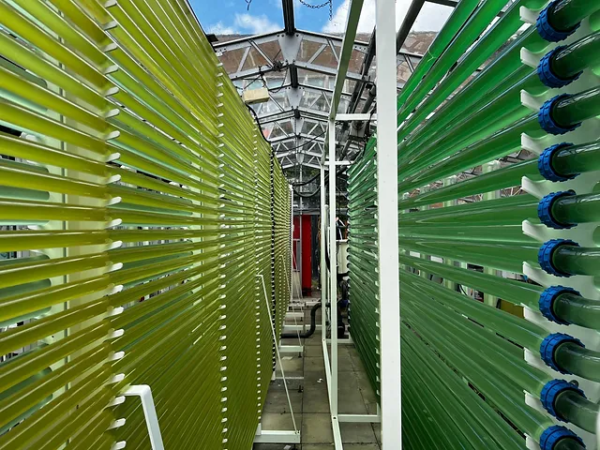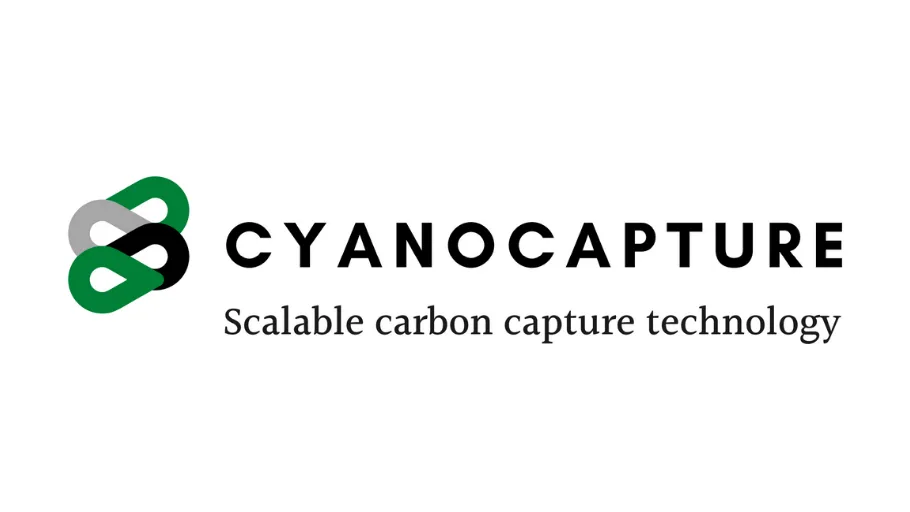 Back
Back
How VOYAGERS’ climate festival, 🔥THE HEAT, captured carbon in a field
🔥THE HEAT brought carbon capture to a field in Oxfordshire – thanks to our partner CyanoCapture, who brought a photobioreactor to show how much CO2 was being captured in real time.

BY JOE ROWAN, June 19 2024
THE HEAT, VOYAGERS.io’s first-ever climate-tech festival, took place on Friday September 20 2024 at the extraordinary Harwell Science and Innovation Campus in Oxfordshire.
THE HEAT is a hands-on, practical, mind-expanding, friendship-building, exploratory, curiosity-led, science-based, creative, artistic, participatory, decentralised, experimental, edgy, live, risky, urgent and unpredictable gathering of the talented people working on climate technologies. THE HEAT is not a conference. Don’t expect dull panels or awful coffee. Instead, come to make new friends, experience science in action, learn and share your knowledge, inspire and be inspired. Bring your most engaged and curious festival mindset.
THE HEAT brought carbon capture to a field in Oxfordshire – thanks to our partner CyanoCapture, who brought a photobioreactor to show how much CO2 was being captured in real time.
Learn more about it in our article below and at https://CyanoCapture.com.
David Kim brought carbon capture to a field in Oxfordshire for THE HEAT. Kim’s company, CyanoCapture, uses genetically engineered photosynthetic bacteria to sequester carbon dioxide at emission sites at an industrial scale. And just to show it works, he brought a photobioreactor to the festival to mirror the decarbonisation process.
This photobioreactor contained anywhere between 20 and 100 litres of algae, hooked up to a pH-control CO2 injector and a small tank. “This [contained] lab-grade CO2 — that is, 5% CO2, the same concentrations you’d expect from flue gas from power stations,” Kim explains. Probes in the bioreactor measured how much carbon it absorbed at any time, which festival participants were able to examine.
“You [could] see a big dashboard showing how much CO2 has been captured live before your eyes, using only sunlight.”
The key to this entire process, as the company’s name suggests, is cyanobacteria. Along with microalgae, these microscopic bacteria are responsible for 30 to 50 per cent of all the oxygen produced on Earth. They were some of the earliest users of photosynthesis, preceding even plants and trees. Yet the process typically results in thousands of waste compounds, making the output not too useful in industry.
CyanoCapture has resolved this by using CRISPR gene-editing technology to ensure that the bacteria produce whatever specific compounds are desired, while also capturing large amounts of carbon. “So a power-station owner in Malaysia can say, ‘I want you to capture the carbon dioxide, but we really need to make palmitic acid so that we can displace the need for palm oil’. And a company in Australia can say, ‘You can capture our carbon dioxide, but we want you to make insulin’.”
The 14-strong company, based in Oxford, has come a long way since it launched in 2021. “We started out with a single metre by 50cm bench that we rented, and now we have a big lab of our own and are about to do another big lab move and get into our own space,” Kim says. This has been helped by several grants and competition wins, including $250,000 from the Elon Musk Foundation XPRIZE in 2021 and €100,000 from the Shell New Energy Challenge in 2022. In total, the company has raised over £790,000 in prizes and £1.4 million in venture capital.
The company believes its approach offers scalability. Kim’s calculations suggest that the process could capture one tonne of CO2 for only 350 kWh of electricity. “If you put that into context, your leading carbon-capture companies use about 2,000 kWh of electricity per tonne.”

So remember that the flat panel full of greenish fluid at THE HEAT is just the tip of the iceberg: “It’s the idea that those same cyanobacteria, deployed in the millions of litres in the field in massive, transparent pipes are actually the most efficient way to capture carbon out of any system out there.”

Learn more about CyanoCapture at CyanoCapture.com